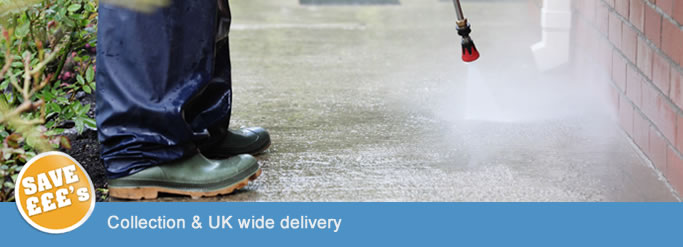How to use a pressure washer to clean wooden decking
A pressure washer can offer a very efficient means of cleaning your garden decking, but if you don’t use it correctly it also has the potential to ruin the wood. It’s critical to choose an appropriate pressure setting and to keep the wand tip some distance away from the wood while you are using the unit.
Pressure washers or water bowsers come in different types and sizes, ranging in power from a few hundreds pounds per square inch (psi) of water pressure to several thousand, with some powered by electric and others by gas engines.
Every water bowser also has a range of settings to enable it to tackle a wide range of tasks. If you set the pressure too high, or use the wrong type of pressure wand tip, you could end up power etching your decking rather than just cleaning it – leaving you with the much more arduous task of re-sanding the wood or even replacing the decking.
To clean your decking without causing damage, make sure you use the appropriate:
- pressure setting;
- wand tip; and
- power washing technique.
If you don’t own this type of cleaning equipment yourself, pressure washer hire is widely available from garden and tool hire centres.
Choosing the right pressure setting
Power washers have many applications and as a result they come with a variety of settings to suit different jobs. When it comes to cleaning wood, try to use the lowest pressure possible to clean the wood effectively without causing unwanted damage. Soft wood such as pine or cedar need settings as low as 500-600 psi, while harder woods may be able to take a slightly higher pressure of up to 1200-1500 psi.
Choosing the right pressure washer wand tip
The fan tip is the best type of wand tip to use for cleaning wood. Fan tips are measured in degrees, with a 40-60 degree tip size most suitable for cleaning wooden decking. Alternatively, if you are very careful, you can use a rotating tip.
Using the right power washing technique
Start in an inconspicuous area of the deck using a low pressure of 600 psi to see if that is effective enough to clean the wood properly, holding the wand pointing away from people and any glass doors or windows. You could test the pressure on a stair tread, since in a worst case scenario these are easier to replace than a main deck board.
Keep the wand held about 24” away from the decking, feathering it into range of about 12-18” from the decking. If you find 600psi is not cleaning effectively, increase it incrementally, checking all the time that it is not damaging or etching the surface of the wood. As soon as you reach an effective pressure, stick with that setting.
Once you have found the right settings, work from your house outwards, following the grain by feathering the spray lengthwise, cleaning the deck with a sweeping motion. Try to keep the wand at the same distance from the wood as you work by moving your arm laterally backwards and forwards.
How to fix rough, raised wood fibres
When you use water on wood, it can create raised fibres and a rougher surface. You will minimise this if you find the right settings and use the right power cleaning technique, but the chances are you may have a few spots that need sanding afterwards. Pay particular attention to hand rails, which may give people splinters if they have raised fibres – sand them down to create a smooth surface ready for a fresh application of wood sealer. For handrails, choose a sand paper of up to 100 grit, while for the main decking you can use a 60-80 grit sand paper and hire a random orbital sander using a 5″ pad.
Date posted: 7th April 2014


